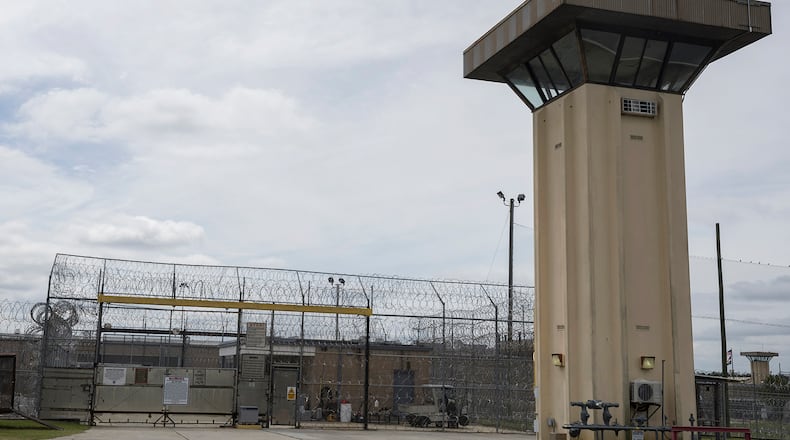When most people think of the Federal Bureau of Prisons, they think of the many federal prisons across the country. They don’t think of houses in their neighborhoods.
There is a group of 150-plus small facilities in our communities that house and oversee more than 14,000 adults in custody. The Bureau of Prisons contracts with these facilities — known as residential reentry centers or halfway houses — to provide assistance to adults in custody who are nearing release. Residential reentry centers provide a safe, structured, supervised environment for the adults in custody, as well as employment counseling, job placement, financial management assistance and other programs and services.
Reentry centers help those in custody gradually rebuild their ties to the community during this transitional phase. Contracts usually have an in-house portion (the adult in custody lives in the halfway house) and a home-confinement portion (where the adult is ordered to stay their own residence for some of the day.
When the Bureau of Prisons places adults in custody in home confinement, the residential reentry center is responsible for providing oversight and programming. The term “prerelease custody” applies to placement in either a halfway house or home confinement.
Credit: AP Photo/Susan Walsh, File
Credit: AP Photo/Susan Walsh, File
The Bureau of Prisons does not own or run any reentry centers itself. Though nothing prevents the bureau from running such facilities, the Bureau of Prisons already employs 36,000 staff at 122 prisons, and it is well documented that the bureau cannot fully staff these facilities and has myriad problems.
Thus, the Bureau of Prisons must continue to rely on contracting for private entities that own and operate such facilities. Despite this, the Bureau of Prisons historically has struggled to find locations for residential reentry centers in some jurisdictions.
Sometimes operating such a facility is cost prohibitive, such as in Hawaii, where land is much more valuable for other uses. Other times, the community has fights against allowing zoning for an reentry center.
The First Step Act of 2018 was signed into law by then-President Donald Trump on Dec. 21, 2018. The act sought to improve criminal justice outcomes and reduce the size of the federal prison population while creating mechanisms to maintain public safety. Among other things, the act provides for low-risk adults in custody to earn time credits toward placement in early supervised release and prerelease custody. The Bureau of Prisons has had many challenges and missteps implementing the First Step Act, most recently culminating in a food strike by adults in custody.
The Bureau of Prisons, however, is not responsible for all the issues.
Congress inadvertently put the bureau in an impossible position. The act states that “Time credits earned under this paragraph by prisoners who successfully participate in recidivism reduction programs or productive activities shall be applied toward time in prerelease custody or supervised release. The Director of the Bureau of Prisons shall transfer eligible prisoners, as determined under section 3624(g), into prerelease custody or supervised release.”
The use of the word “shall” is key here. “Shall” is mandatory, not permissive. This means that if someone earns time credits and is otherwise eligible, they must be put in prerelease custody.
When the First Step Act was passed, the Bureau of Prisons recognized this requirement and began looking into ways to increase residential reentry centercapacity. Despite repeated attempts, the bureau has made only incremental increases.
According to the bureau’s Office of Public Affairs, there were 10,408 beds in contracted halfway houses on Jan. 1, 2019. As of Sept. 23, 2024, that number was 10,553 — only 145 more in 5½ years. Inexplicably, the Bureau of Prisons is now telling offerors that they are canceling some solicitations for additional residential reentry center capacity because of “budgetary and staffing considerations.”
The bureaureceives more than $400 million annually to implement the First Step Act. Surely, it can find a way to use some of this funding to increase reentry center capacity.
As the numbers demonstrate, trying to procure more capacity in the same manner as in the past has not resulted in dramatic changes. In fact, some could argue that the Bureau of Prison’s unwillingness to utilize creative contracting and technical solutions are contributing to the bureau’s lack of capacity. Rethinking how it procures halfway house beds, finding unique pricing options and rethinking staffing requirements and alternatives are needed to ensure the bureau can increase capacity.
However, such changes alone will not give the Bureau of Prisons sufficient capacity to meet all of its needs.
As adults in custody are now earning sufficient time credits to be eligible for significant time placement in prerelease custody, the bureau says it lacks sufficient bed space and is unable to fully comply with the law. The Bureau of Prisons is limited in its ability to house adults in custody in residential reentry centers by the number of centers and home confinement “beds” under contract.
Among the 10,553 residential beds in halfway houses as of Sept. 23, 8,665 were filled and 1,888 are available, according to bureau’s Office of Public Affairs. For home confinement, the Bureau of Prisons is contracted for 3,900 participants and has 4,659 participants — an overage of 759 adults in custody.
So it appears the bureau is over capacity by 19% in home confinement and at 82% capacity in halfway houses. The BOP notes that “many of the unfilled beds in reentry centers are at locations that are hard to fill or are outside of the release residence area of individuals requesting community confinement placement.”
A short survey of the bureau’s halfway house providers confirms that they are operating well below maximum capacity. Many residential reentry centers have unused capacity, including those in highly desirable locations.
Some of this is under contract with the bureau and some is not.
For example, one halfway house provider reports it is operating at 89% of contracted capacity but still has hundreds of available beds in much-needed locations not under contract. The Bureau of Prisons could look to modify those existing contracts to increase the number of beds available.
In addition to identifying and using different contracting methodologies and maximizing its already existing available capacity, the bureau needs to find a way to prioritize and house all those eligible for community placement to the maximum extent possible. We propose a three-tiered residential reentry center placement process that will allow transparency and fairness to the extent possible under the law.
The first tier for consideration for placement in prerelease custody are those who have earned time credits under the First Step Act. As described above, the law requires these people be placed in prerelease custody when they have earned sufficient time credits. So the Bureau of Prisons must follow the law and give them priority for placement over all others. If they fill all the halfway house and home-confinement beds, then the assessment stops here.
If capacity still exists after these adults in custody are placed in halfway homes, then the bureau should look to the second tier: those not eligible for the First Step Act but who are eligible under the Second Chance Act.
The Second Chance Act allows for prerelease custody up to one year (including the lesser of a maximum of six months or 10% of the sentence of in-home confinement). The Second Chance Act predates the First Step Act and was the only mechanism for prerelease custody for adults in custody until the First Step Act passed.
Under this tier, these adults in custody are not eligible for First Step Act time credits because of their recidivism risk and/or their sentence was excluded under the act. These adults in custody are more likely to need placement in prerelease custody, as they are generally of a higher risk of recidivism and need the resources that community transitional programming provides.
Thus, as citizens, we want this group to get the transitional assistance to increase their likelihood of success. This is the group that prerelease custody was originally designed to help. To the extent capacity is available, the Bureau of Prisons should maximize placement of these adults in custody in accordance with the Second Chance Act.
To the extent that the bureau has any capacity left, it would look at the third tier. These are those people who have earned First Step Act time credits and are also eligible for time under the Second Chance Act. The Bureau of Prisons calls this “double stacking.” The laws allow this, and the bureau has said it is seeking to double stack.
We applaud the Bureau of Prison’s efforts here but note that such application has been sporadic and inconsistent and often to the detriment of those in the second tier.
Use of a tiered system like this will allow the Federal Bureau of Prisons to comply with the First Step Act to the extent it can, provide a consistent and fair process for everyone and protect society by ensuring those most at risk have an opportunity for community placement as they had before the First Step Act was enacted.
Hugh Hurwitz held multiple positions in the U.S. Bureau of Prisons, including acting director and assistant director for reentry services. He now consults in prison management, reentry and reform, organizational change and other areas. He is a member of the Council on Criminal Justice. Walter Pavlo is the founder of Prisonology, a network of retired Bureau of Prisons experts that assists defendants and criminal defense attorneys with federal prison matters. Prisonology works with attorneys to provide a better outcome for their clients.
Keep Reading
The Latest
Featured




